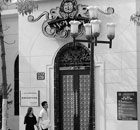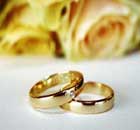Top Biz News
Collectors sniff a fortune in antique snuff bottles
(China Daily)
Updated: 2010-02-25 10:29
 |
Large Medium Small |
|
 |
|
Three Chinese porcelain snuff bottles that are being auctioned by Bonhams in Hong Kong on May 28. Each snuff bottle is expected to be sold for between HK$60,000 ($7,732) and HK$120,000.[Agencies] |
LONDON: A collection of antique Chinese snuff bottles is expected to fetch at least 20 million pounds ($32 million) when it is offered at a series of sales in Hong Kong, the London-based auction house Bonhams said yesterday.
The late Hong Kong-based businessman, George Bloch, and his wife Mary spent more than two decades collecting 1,720 Qing Dynasty bottles which have been shown around the world.
"It's a collection that was formed with a large amount of intelligence, integrity and a lot of money," said London-based dealer Robert Hall, a specialist who advised the Bloches.
Newly wealthy Chinese are keen to acquire high-quality objects from their heritage, particularly when associated with emperors from the Ming and Qing dynasties, said dealers. Prices for porcelain of these eras increased 48.2 percent between 2005 and 2009, according to UK-based database Art Market Research.
The first of an expected 10 biannual Bloch auctions will be held on May 28, when 140 bottles may raise more than 1.5 million pounds, said Bonhams.
"The collection was begun at a time when not many people were collecting snuff bottles in a serious way," Hall said.
A mid-18th-century porcelain "moon flask" bottle painted with a winter landscape commissioned by the Qianlong Emperor is expected to fetch as much as HK$2 million ($257,634). A similarly dated Beijing enamel bottle showing a Western mother and child has a high estimate of HK$3 million.
Another Qianlong "European subject" enamel bottle, from the collection of Vancouver philanthropist Mary Margaret Young, sold at Christie's International in New York in 2008 for a record $825,000.
Collectors encouraged
| ||||
The practice of inhaling snuff, or ground tobacco, was introduced to China by European travelers in the late 17th-century. Western snuff boxes were unsuited to humid Asian conditions and Chinese craftsmen created airtight bottles to keep the powder dry. Examples in porcelain, lacquer, jade, glass, ivory and enamel became highly valued goods and gifts.
The niche collecting area of snuff bottles has been dominated by Western buyers, with the best examples offered at auctions in New York and London, said Colin Sheaf, chairman of Bonhams Asia.
"For the first time a top-quality collection is being dangled in front of Chinese mainland buyers across the border," Sheaf said. "That's where we'll be focusing our marketing and advertising."
A Chinese collector paid 305,600 pounds for a white jade "double dragon" Imperial seal at a 4.9 million-pound Bonhams auction of Chinese art in London on Nov 5. More than 30 percent of the successful lots were bought by mainland Chinese bidders.
Bloomberg News













